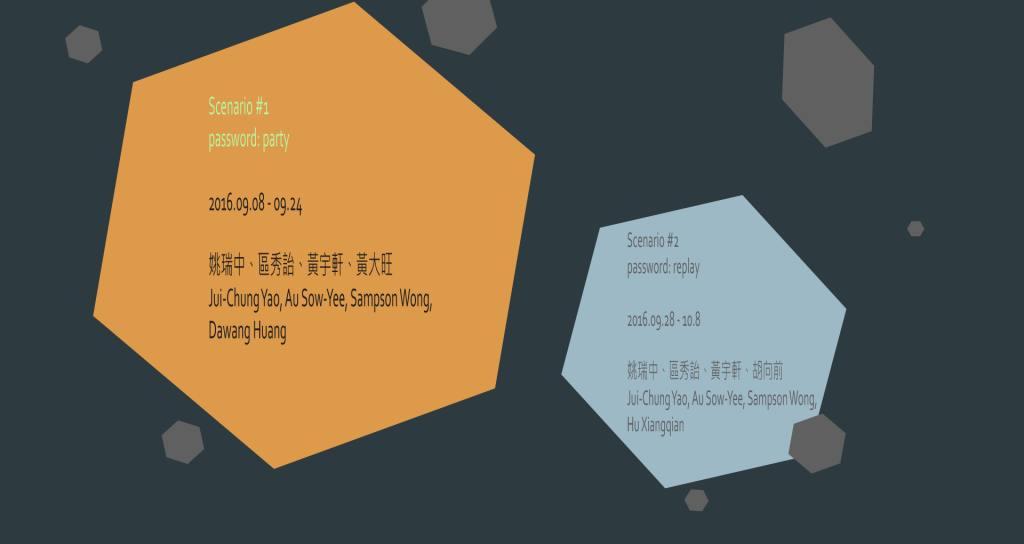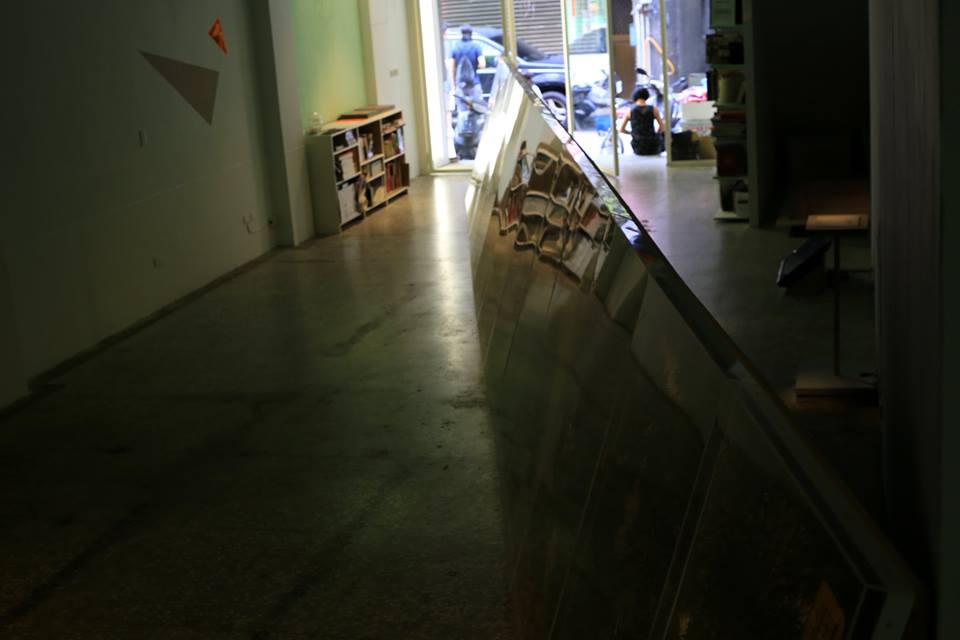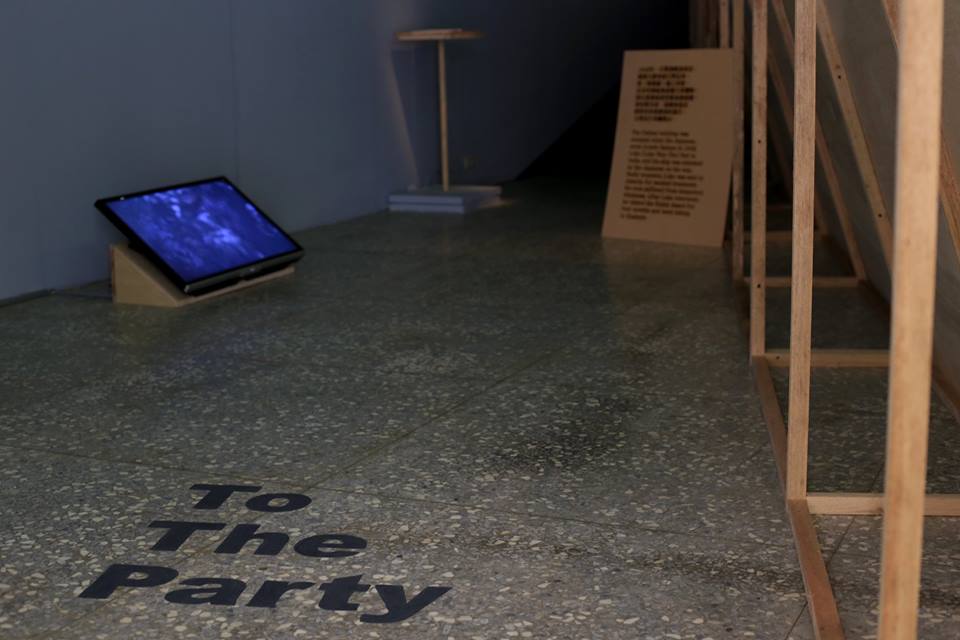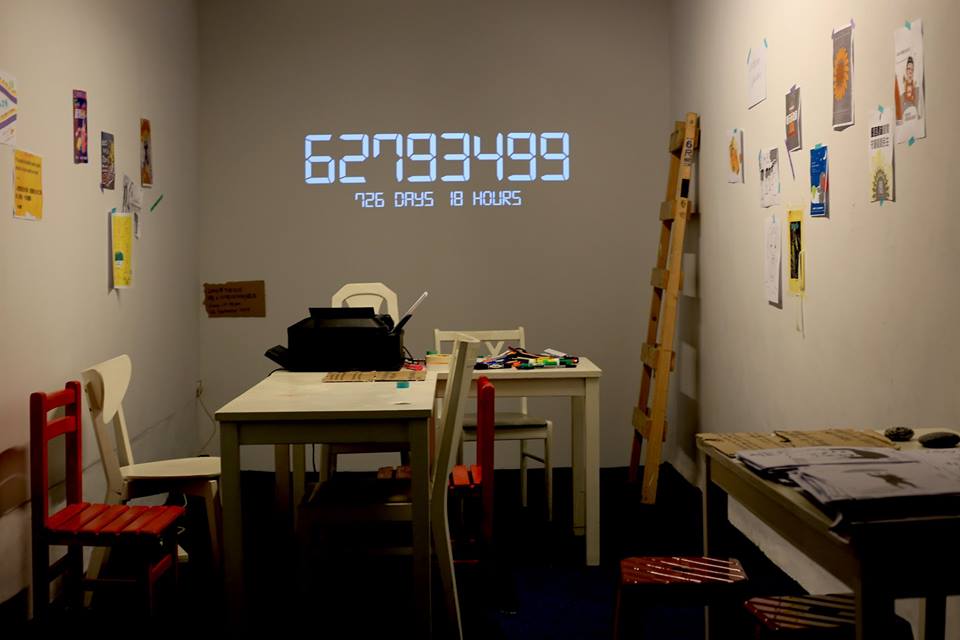For English, please scroll down.
是的,這個關於思想歷史身體樣貌的故事,偏偏從各種微敘事出發:
橫跨整間展場的巨幅風俗山水畫,伴著馬來群島廢棄橡膠園中騎馬舞的樂音,社會運動的海報工作站,還有在地早期流行歌謠的走唱表演。
這個炫目的開場組合端出了另類邊緣歷史敘事生產方案,開啟「肖像擺」的運動模式。這些穿梭在藝術家個人生命史與大歷史框架間相互交感的紐帶,聚結那些正在以及尚未成形的新政治力。透過這些有機、反骨的聚集,敘事和歷史之間變異、生成的光譜現身,我們得以進而思考其中具有身體性的碰撞究竟在抵抗些什麼?節奏同誰擊響共鳴?並去理解那些關於個人生命邊界的探索意圖又是如何轉進更大的歷史框架中,造成新的觀點和敘事的空間。
姚瑞中擷取個人與台灣文化藝術圈人士長年往來的生命經歷,描繪橫跨台灣藝術場景二十餘年的人物誌《週休八日圖》,在不同時空中活躍的友人被放置在連續性的穿越場景中,各自從事其特殊的閒情癖好。一種聯繫在嬉遊、交誼、工作、勞動間的藝術生產與對話關係在此畫面中展開,斜映出各種藝術文化生產機制的疆界。對於各種分化與排除、中心與邊陲進行了重新交融的想像提案,也對在地藝術史、美學觀點的建構趨力敲下批判性提示。
《If the party goes on. 序曲》是區秀詒在本展覽中發表的首部曲,該計畫也是《克里斯計劃》的第二階段。從Ravi遺留在棉佳蘭叢林裡「克里斯電影工作室」中的手稿為主要文本架構,藝術家從一個未竟的場景裡——國泰電懋董事長陸運濤由於1964年神岡空難的關係,錯失原訂在圓山大飯店的一場影界大老聚會——展開對冷戰歷史後場線索的再連繫。國泰電懋這間跨國電影工業公司所得以揭示的冷戰權力佈局、個體到國族的文化主體間各種邊界的演繹,將從這個序曲獲得相關暗示:關於地方、文化、信仰、資源、掠奪等。
黃宇軒的臨時海報工作站可以視為他反省歷史檔案意涵的一個嘗試。在香港雨傘運動期間,他自發性地合創「雨傘運動視覺庫存」檔案庫,大量收集運動現場的各種文件、物件,為該運動現存最龐大的資料檔案庫,後續也透過新的展示計畫來討論該運動與都會空間的對應關係等。然而這次在台北的發表計畫有了一個新的轉向,除了希望同時透過和太陽花學運的脈絡對話交流,找到面對未來的方案,這個邀集共筆書寫的工作站甚至在稀釋文件意義的copy & paste動作內,去重新牽動歷史與當下一起前行的可能。
黃大旺採集30年代以降日治時期的流行歌謠作為一種對地方與個體生命的回顧。這些傳唱著小人物、底層族群、不得志者心聲的曲目,銘印著時代記憶和共通情感,猶如一幅幅被哼吟而出的肖像,在黑狼黃大旺的走唱評論性表演導覽中,以新聚首的人群作為對大稻埕在地歌謠史的一面時光鏡子,在創造一種今昔對比都市音景拼貼之時,暗諷社會現實況味以及近來流行文化中的表層懷舊風情。
姚瑞中
姚瑞中的創作關懷著人類處境和歷史的荒謬,以不同的形式和媒體進行各種具有政治性的批判和諷刺性的暗喻。他更在自己長期的實踐裡,體現了高度的社會責任感,揭露社會性的不公義並且執著於藝術史及檔案保存的重要性。目前工作與生活於台北。
區秀詒
在區秀詒的影像語彙中藉其深究田調訪、文獻考所集結之生命經驗,以歷史語境的爬梳,反映於高度思辨的音像部署。其創作上的美學探討,一是對影像(史)生成機制和其幽靈的關注,以機械式電影放映機而作的現場電影;二是以錄像、觀念、裝置等混合形式,探討和擴延影像與影像製造以及政治、權力之間的關係。目前工作與生活於台北。
黃宇軒
跨足於藝術創作、策展實踐及文字書寫,並同時致力於跨界的都市研究。其計畫往往以扎根在地的政治解放精神,關注都市理論、空間、權力與自由等問題。他過去幾年間共同創辦了諸多團體,包括雨傘運動視覺庫存。目前工作與生活於香港,並在香港演藝學院任教人文學科。
黃大旺
黃大旺身為非當機中後媒體時代吟遊詩人、即興表演家、聲音wiki活體百科,以其噪雜失衡卻精準深刻的肢體和語言在滔滔資訊流中展開時代性的辯證。他以「黑狼那卡西」創作演出廣為人知,也在同人誌創作、文化研究上自成一格,其狂廢的精神世界、溫暖與暗黑並行的身態在台上台下都劃出一道透徹反思社會的歪光。目前工作與生活於台北。
The concept of historical figuration can be imagined as a constellation of micro-narratives:
A large-scale contemporary Chinese landscape painting runs through the entire gallery, accompanied by the enchanting music of Kuda Kepang from an abandoned rubber tree plantation in Malaya. A temporary poster station is in operation, and the Black Wolf performs in the local neighborhood, playing samples of early Taiwanese folk music.
To kick off, the opening composition of Portrait Portrait is a dazzling scenario that stretches out into alternative narratives that explore the histories of those living on the margins. The tensions and conversations between artists’ personal narratives and History (with a capital H) captivate and call for a new potentiality in political forms. Through unrefined rebellious gatherings, the spectrum stretching from one to the other is revealed as a contemplation on the variation, production and embodiment of artistic resistance and resonance. From the work of the four artists, we may come to understand how their intentions for investigating the boundaries of individuality engage a contemporary historical framework to generate new perspectives within a narrative space.
Taking inspiration from his personal life, Yao Jui-Chung’s close-up portraits depict his longtime friends as avatars of the Taiwanese contemporary art scene. Eight Days a Week brings together friends from different spaces and times in a surreal landscape. Each character in the painting seems to take pleasure in their personal hobbies, which suggests a dialectic and blurry relationship between work and fun, social networking and labor. Through his work, Yao comments on the construction of local art history and aesthetics to remix different centers and margins, divisions and exclusions.
If the Party Goes On: Prelude is the second phase to Au Sow-Yee’s ongoing Kris Project, and the first part of her presentation in this exhibition. Picking up on incidents from the film history during the 1950s and 1960s, Au reinterprets post-Cold War politics through Ravi’s script If the Party Goes On from the Kris Film Studio in the Mengkerang forest, and a party that could never take place. Loke Wan Tho, chairman of the film giant Cathay-MP&GI, missed the party at the Grand Hotel due to the Shengang air crash in 1964. Filled with top members of the movie industry, the particular event, and Loke’s company could be seen as a map to understanding the distribution of power in the Cold War. The performative borders of individual and national subjectivities are revealed, and The Prelude allows us an intimate view of Au’s assessment of place, culture, faith, resource and exploitation.
Sampson Wong’s poster station could be considered as his latest reflection on archiving. After he co-founding the Umbrella Movement Visual Archive, he collected many documents and objects from the streets. This is the largest visual archive of the Movement, with artists attempting to discuss their relationship with the urban surroundings through new display strategies. This presentation in Taipei sees the artist partnering with the local Sunflower Movement, the two factions now have an opportunity to openly co-author ideas for the future, defining a path for the past and present to walk side by side, diluting the significance of historical artifacts with the invitation for the audience to rework on the materials.
Dawang Huang samples the popular Taiwanese folk songs from the 1930s during Japanese colonial rule to compose his folksong history as Black Wolf. Huang’s music communicates the voices and experiences of the minor social class, and expresses the common feelings and bonds of the memories of regular people. During his performances, Dawang tours through the old town of Dadaocheng as Black Wolf, expressing his social commentary through songs. A street party will emerge around the artist at the crossroads of the old community’s musical culture and new urban soundscapes, while criticizing the contemporary, superficial craze for the past, and the artificial nostalgia that it embodies.
YAO Jui-Chung
Yao is an artist whose practice has been consistently sensitive to human conditions and the absurdity of history throughout its various forms and media. Critical and often sarcastic metaphors act to politically charge his work that expose injustice and question the social responsibility of archives and art history. Yao lives and works in Taipei.
AU Sow-Yee
AU Sow-Yee’s work takes two approaches rooted in moving images. One is her continuing interest in image-making mechanism and its ghost, creating live cinema performances using mechanical film projectors. Second is to question, explore as well as expand the relation between images, image-making, politics and power, through video installations and other mediums. Through her artistic language and dialectical approach to audio-visual “mapping”, she depicts the accumulation of a ‘bio-archive’ from her investigation into historical contexts. Au lives and works in Taipei.
Sampson WONG
Wong works as an artist, curator and writer, following his research interests in trans-urbanist projects. He reconsiders the local conditions with new political liberation spirit, and explores issues about urbanism, space, power and freedom. He has co-founded many groups, including the Umbrella Movement Visual Archive. Wong lives and works in Hong Kong, and currently teaches in Hong Kong Academy of Performing Art.
Dawang HUANG
Half-crashed post-media bard, improviser, living sound Wikipedia – Dawang Huang enacts an epic debate among the speedy data flow with his idiosyncratic noise-language and profoundly unbalanced bodily expression. Best known for his Blackwolf Nagashi performances, he has created a genre unto himself in fanzine and cultural studies. His wild ‘scum’ world and obscure, yet warm attitude he approaches the ethics of modern society via a crooked path. Huang lives and works in Taipei.




